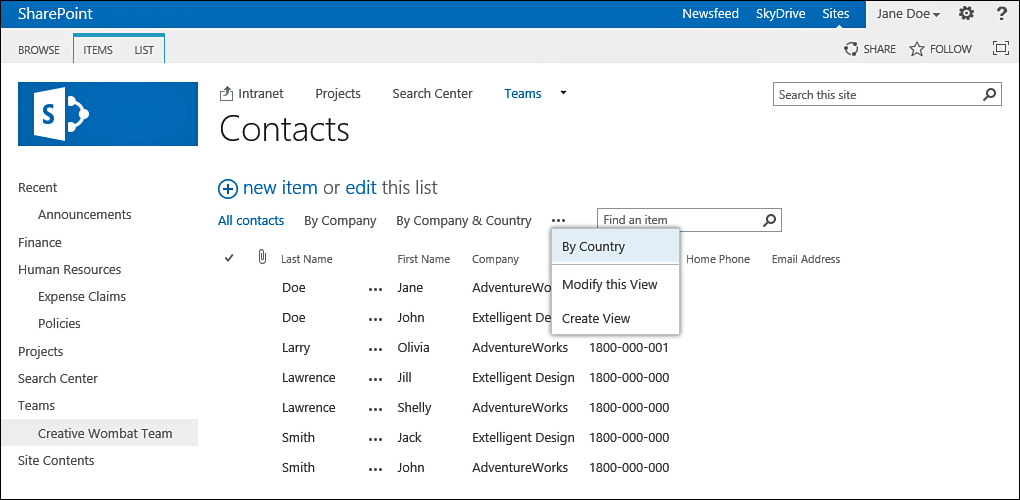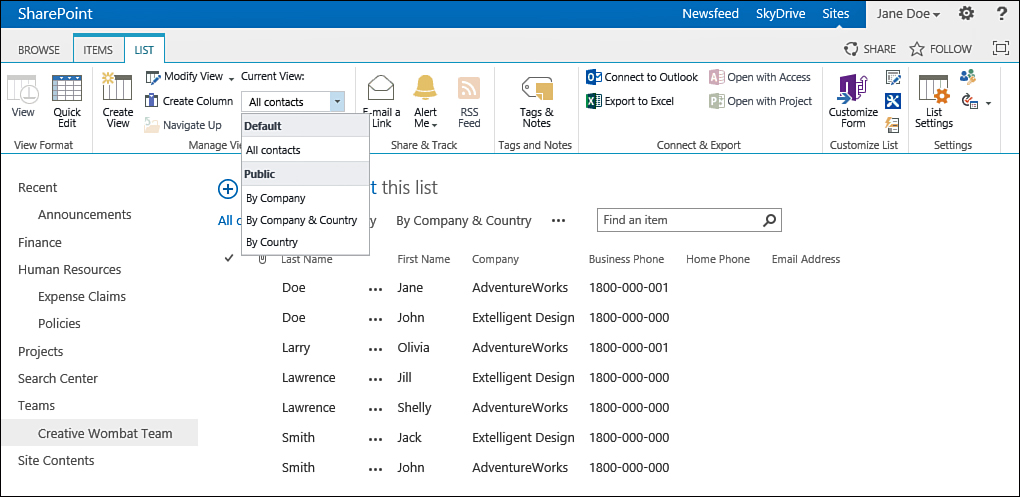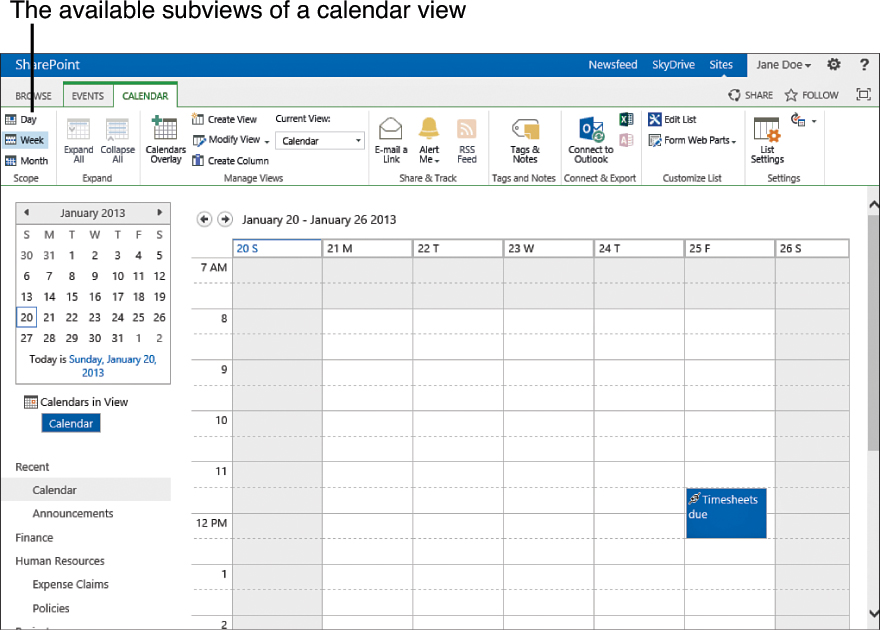Scenario/Problem:
Most lists and libraries have different list views that show different
columns and apply different sort orders, filters, and styles. Switching
to a different list view can help you more easily find information in
the list or library.
Solution:
You can switch views in several ways. First, above the web part showing
the items or files, the different views will be displayed as
navigation—allowing you to switch from one view to another simply by
clicking the view’s name. If more views are in the list than can be
displayed, only the first few will be displayed, and the rest will be
in a view selector control, requiring you to click on the three dots
and open a drop-down menu with the rest of the views, as shown in Figure 1.

FIGURE 1 Click on the name of the view above the list or open the drop-down menu to show other views you can switch to.
In some lists, the views are not shown above
the list items. In those cases you can switch to the List or Library
ribbons. In the ribbon, you locate the Current View drop-down menu,
which is usually to the left of the E-mail a Link button. When you open
this drop-down menu, you see the names of all the views that are
available for you in the list (see Figure 2).

FIGURE 2 The view selector drop-down menu in the List ribbon.
Note
The ribbon name might
change depending on the type of list or library. For example, in
calendar lists, the name of the ribbon is Calendar, whereas in most
other lists, the name of the ribbon is List.
These views are either public views (that
everyone sees on that list) or a private view that you have created for
yourself.
Tip
Investigate the different views. Some views
might be more efficient and helpful for you to quickly find data. You
can do some things beyond filtering and sorting that you can do only by
creating views, so take a look at your options.
Some special instances of views have
subviews. Subviews offer other ways to see the same view. For example,
in calendar views, you can switch between the daily subview, the weekly
subview (see Figure 3),
and the monthly subview by using buttons on the ribbon. These subviews
show the information that is defined in the view itself (filtering the
items, ordering the items) but in a different manner.

FIGURE 3 The weekly subview of a calendar.
To switch between the subviews of a calendar
view, you use the Day, Week, and Month links in the Calendar ribbon
when in a calendar view.
Note
Survey lists are unique in that they
do not offer ribbons (at the time of this writing). Instead, this type
of list offers a toolbar at the top of the list view with buttons that
allow you to do most of what is available in the corresponding ribbons
in other lists and libraries.